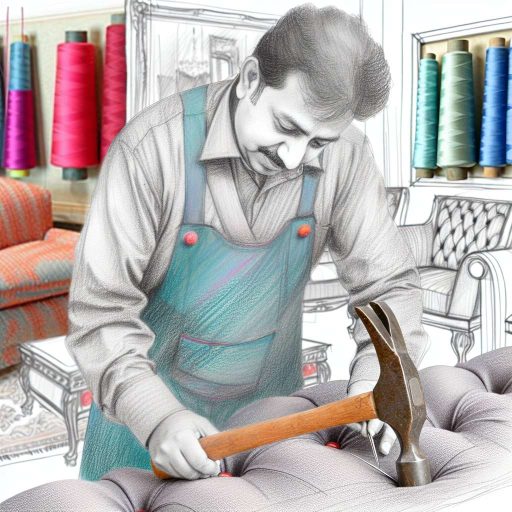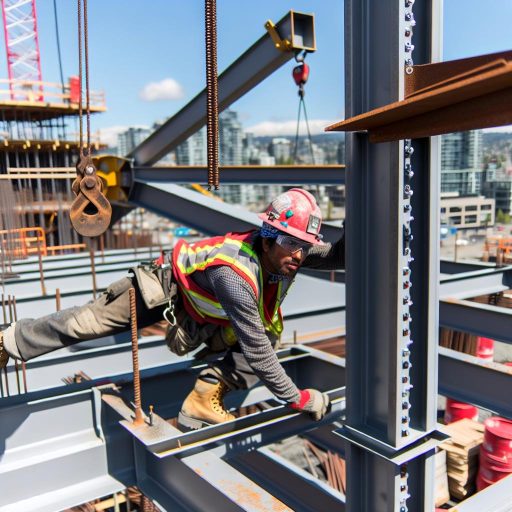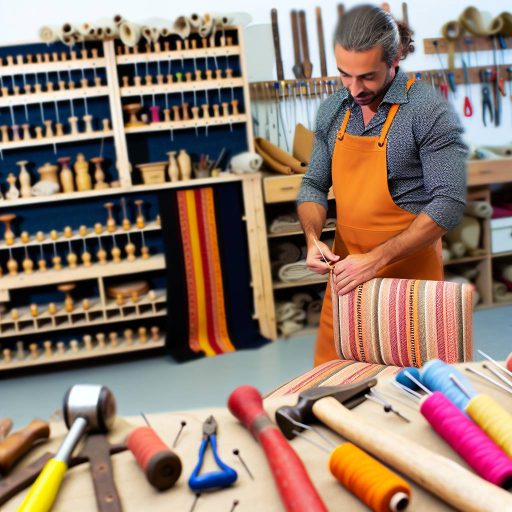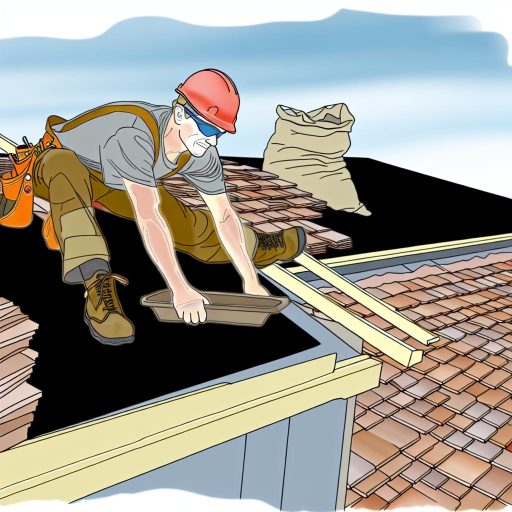Introduction to Bricklaying as an Art Form
Bricklaying is more than just a construction technique.
It embodies artistry and meticulous craftsmanship.
Bricklayers transform simple materials into stunning structures.
This art form combines function with aesthetic appeal.
Each brick placement is deliberate and thoughtful.
Moreover, the patterns and designs showcase creativity.
Bricklaying requires skillful techniques and precision.
Artistry in bricklaying came from ancient civilizations.
Structures like the Great Wall of China highlight this tradition.
Contemporary bricklaying continues this rich legacy.
Artists today often experiment with form and color.
They create unique styles that redefine urban landscapes.
Through innovative designs, bricklayers push creative boundaries.
Next, we will explore the various elements of this craft.
Historical Significance
Bricklaying dates back thousands of years.
Ancient structures reveal the importance of durability.
Brick was a favored building material in various cultures.
From Mesopotamia to Rome, the artistry flourished.
Today, historic brickwork stands as a testament to skill.
Techniques and Styles
Many techniques define the art of bricklaying.
For instance, bond patterns showcase creativity and stability.
Common styles include herringbone, running bond, and Flemish bond.
Each method influences both appearance and strength.
Additionally, color variations enhance visual interest.
Contribution to Modern Architecture
Bricklaying remains vital in contemporary architecture.
Unlock Your Career Potential
Visualize a clear path to success with our tailored Career Consulting service. Personalized insights in just 1-3 days.
Get StartedArchitects rely on brick for both functionality and design.
Innovative buildings frequently feature intricate brick facades.
This technique can adapt to various architectural styles.
Brick structures continue to withstand the test of time.
Historical Evolution of Bricklaying Techniques
Origins of Bricklaying
Bricklaying has ancient roots, dating back thousands of years.
Archaeological evidence shows its use in Mesopotamia around 7000 BC.
Early brickmakers fashioned sun-dried bricks from mud and clay.
Additionally, they developed techniques to stack bricks for structural integrity.
Advancements in Materials
The invention of fired bricks marked a significant advancement in bricklaying.
Fired bricks offered greater durability and resistance to weathering.
This innovation spread rapidly across Mediterranean cultures by the 6th century BC.
The availability of different materials also enhanced brick design possibilities.
Regional Techniques and Styles
Various regions developed unique styles of bricklaying over time.
For instance, Roman architecture prominently featured arches and vaults.
Chinese builders adopted extruded brick methods during the Han Dynasty.
In contrast, Gothic architecture utilized intricate detailing and decorative patterns.
The Industrial Revolution Impact
The Industrial Revolution transformed brick production methods.
Mechanized processes increased efficiency and reduced labor costs.
Consequently, the availability of bricks surged, influencing architectural styles.
Urbanization led to mass housing projects that utilized standardized brick designs.
Modern Techniques and Innovations
Today, bricklaying incorporates advanced technologies and methods.
Innovations include the use of lightweight bricks for easier handling.
Moreover, digital design tools aid in creating complex brick patterns.
These advancements allow for more creative and sustainable building practices.
Key Elements of Artistic Bricklaying Design
Understanding Bricklaying Techniques
Bricklaying combines craftsmanship with creativity.
Artistic designs enhance the beauty of masonry work.
Techniques vary based on regional styles and traditions.
Each method offers unique aesthetic qualities.
Patterns and Textures
Patterns play a significant role in bricklaying artistry.
Common patterns include herringbone, basketweave, and running bond.
Textures add depth and character to brick surfaces.
Smooth, rough, or weathered finishes create different visual effects.
Color Palette and Material Selection
Color choices influence the overall impression of a design.
Bricks come in various shades and hues for artistic expression.
Complementary colors can enhance visual interest.
Material selection also contributes to durability and style.
Integration with Surroundings
Artistic bricklaying should harmonize with its environment.
Designers consider landscape, architecture, and local culture.
Blending styles creates a cohesive look and feel.
Natural elements can further enhance brick designs.
Personal Expression and Cultural Influence
Bricklaying serves as a medium for personal expression.
Artisans often incorporate cultural motifs into their designs.
Creative use of form and function showcases individual artistry.
Community history may influence design choices and methods.
You Might Also Like: Effective Communication Tips for Bricklayers
Famous Bricklaying Projects Around the World
The Great Wall of China
The Great Wall of China stands as an iconic masterpiece of bricklaying.
This monumental structure stretches over 13,000 miles.
Initially constructed to protect against invasions, it symbolizes strength and perseverance.
Bricks were made from local materials, ensuring durability and stability.
Today, it attracts millions of visitors each year.
The Taj Mahal
The Taj Mahal is renowned for its stunning white marble façade.
This UNESCO World Heritage site showcases intricate brickwork with exquisite details.
It was commissioned by Shah Jahan in memory of his wife, Mumtaz Mahal.
The craftsmanship exemplifies Mughal architecture’s artistic richness.
Visitors marvel at its beauty from around the world.
St. Pancras International Station
St. Pancras International Station in London is a stunning blend of Victorian and modern architecture.
Its brickwork features intricate designs and elegant arches.
The station serves as a vital transportation hub, connecting London to mainland Europe.
Revitalization projects have preserved its historical significance.
Travelers appreciate the station’s grandeur and historical ambiance.
The Colosseum
The Colosseum in Rome exemplifies ancient Roman bricklaying techniques.
This amphitheater, built in AD 70-80, could hold thousands of spectators.
It remains a symbol of Roman engineering and architecture.
Bricks and concrete blend harmoniously in its structure, demonstrating durability.
Today, it stands as a testament to ancient history and culture.
The Sydney Opera House
The Sydney Opera House is an architectural marvel known for its unique shell-like design.
Its construction involved innovative bricklaying methods that challenged traditional techniques.
The building serves as a performing arts center and an iconic landmark.
Visitors enjoy its spectacular location by Sydney Harbour.
It represents Australia’s vibrant cultural identity.
You Might Also Like: Exploring the Demand for Bricklayers in Canada
Color and Texture: The Aesthetic Choices in Bricklaying
The Importance of Color in Bricklaying
Color plays a crucial role in bricklaying designs.
It influences the overall aesthetic and atmosphere of a space.
Vibrant colors can energize a room or outdoor area.
Conversely, muted tones create a calm and inviting environment.
Choosing the right color can enhance architectural features.
Moreover, different colors can evoke various emotions.
Texture: A Key Element in Design
Texture adds depth and character to bricklaying projects.
It draws the eye and invites touch, engaging the senses.
Rough textures can provide a rustic, organic feel.
Smooth finishes might evoke elegance and modernity.
Combining different textures creates visual interest.
Combining Color and Texture
The interplay of color and texture transforms design possibilities.
For instance, a bright color on a textured surface stands out.
This contrast can highlight architectural details effectively.
Similarly, subtle color variations can enrich a uniform texture.
Innovative combinations can enhance curb appeal significantly.
Considerations in Aesthetic Choices
Several factors guide the selection of color and texture.
Architectural style greatly influences these choices.
Historical context may also dictate appropriate options.
Additionally, the surrounding environment should be considered.
Sustainability concerns are increasingly important in material selection.
Customizing Bricklaying Designs
Customization allows for unique expressions in bricklaying.
Personalized choices reflect individual taste and style.
Homeowners and designers often work together to achieve this.
Utilizing unique patterns can create standout features.
Tailoring color and texture ensures the project remains distinct.
Explore Further: How to Find Bricklaying Apprenticeships in Canada
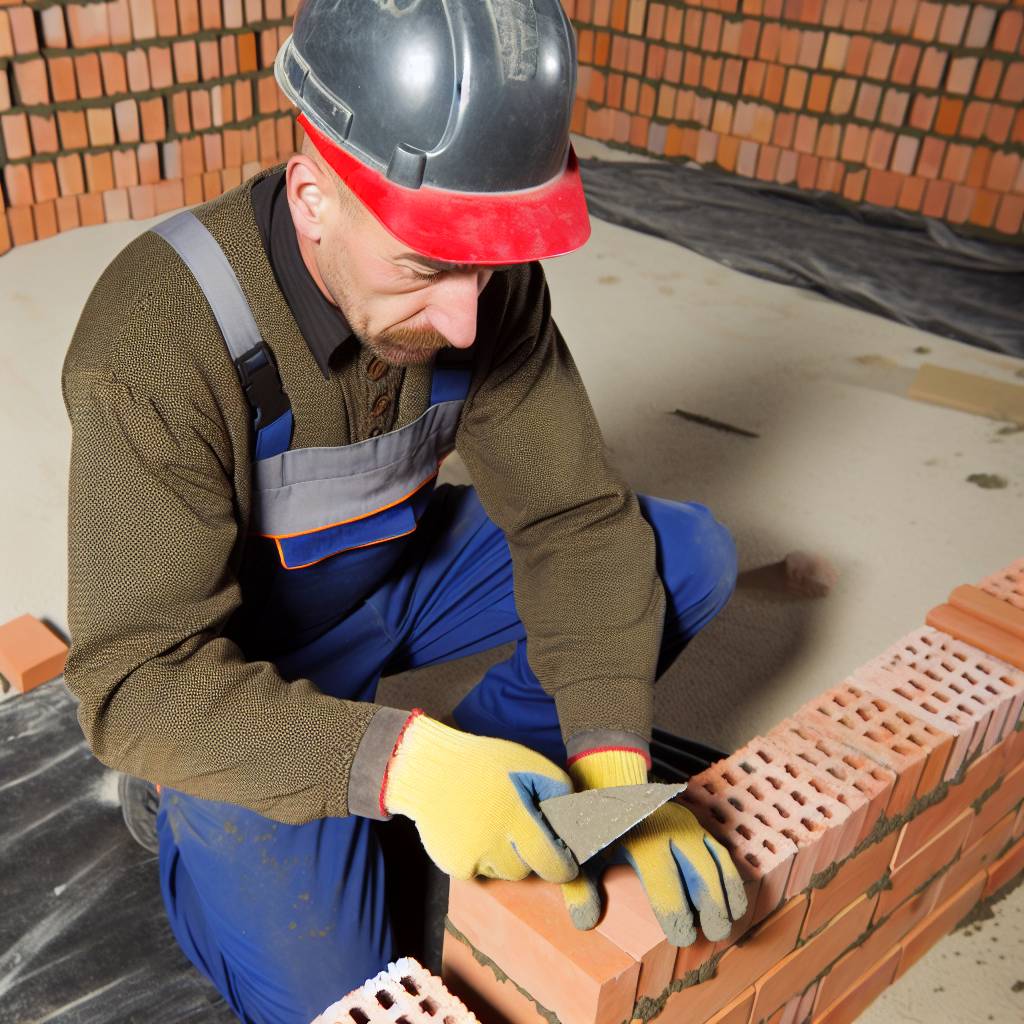
Innovative Tools and Technologies in Modern Bricklaying
Introduction to Modern Bricklaying Tools
The bricklaying industry embraces cutting-edge technology.
With advancements, professionals can enhance efficiency and precision.
Let’s explore the tools revolutionizing bricklaying today.
Robotic Bricklayers
Robotic bricklayers are changing traditional methods.
Machines like the Hadrian X automate the brick-laying process.
They ensure consistency and speed in construction tasks.
As a result, human labor can focus on more complex challenges.
Laser Technology
Laser technology is increasingly utilized in bricklaying.
This precision tool helps in accurate alignment of bricks.
Furthermore, lasers enhance project planning stages.
They allow for real-time adjustments during installation.
Smart Mortar Mixers
Smart mortar mixers improve the quality of bricklaying.
These mixers ensure the perfect consistency of mortar.
Connected devices enable better monitoring during mixing.
Thus, they reduce the likelihood of project delays.
Augmented Reality in Design
Augmented reality (AR) enhances the design process of bricklaying.
AR applications allow clients to visualize projects before execution.
This technology aids in better decision-making during construction.
Additionally, it fosters collaboration between designers and builders.
Sustainable Practices with Innovative Tools
Modern tools promote sustainability in bricklaying.
Energy-efficient machines reduce carbon emissions throughout projects.
Moreover, recycled materials are increasingly incorporated into designs.
Such practices align with environmental goals and regulations.
See Related Content: Why Roofers Are Essential to Construction Projects
The Role of Environmental Sustainability in Brick Design
Integrating Eco-friendly Materials
Eco-friendly materials play a crucial role in modern brick design.
These materials reduce energy consumption during production.
Moreover, they decrease the overall carbon footprint of construction projects.
Promoting Recycling Practices
Recycling is an essential component of sustainable brick design.
Designers utilize reclaimed materials in new constructions.
This practice minimizes waste and conserves natural resources.
Enhancing Thermal Efficiency
Brick designs can enhance a building’s thermal efficiency.
This improvement leads to reduced energy costs for heating and cooling.
Consequently, buildings become more comfortable and sustainable.
Implementing Water Management Strategies
Effective water management is vital in sustainable brick design.
Designers incorporate features that collect and reuse rainwater.
This strategy alleviates pressure on municipal water systems.
Inspiring Community Engagement
Emphasizing sustainability inspires community involvement.
Local residents often participate in design and construction efforts.
This engagement fosters a sense of ownership and pride in projects.
Addressing Climate Resilience
Sustainable brick designs consider the impacts of climate change.
Designers use resilient materials that withstand extreme weather events.
As a result, these structures ensure safety and longevity.
Sustainable Strategies in Brick Design
Sustainable brick design incorporates innovative practices to protect the environment.
These designs prioritize eco-friendly materials, recycling, and community involvement.
They contribute positively to the future of architecture.
Future Trends in Bricklaying Aesthetics
Embracing Technology
Bricklaying is evolving through the integration of advanced technology.
Innovative software now assists designers in crafting unique patterns.
This technology enables a more streamlined design process.
Moreover, automation tools enhance precision and efficiency in bricklaying.
As a result, craftsmanship yields stunning, consistent results.
Sustainable Materials
Sustainability plays a crucial role in future bricklaying trends.
Builders increasingly opt for eco-friendly materials.
This includes recycled bricks and sustainably sourced options.
Such materials help reduce the environmental footprint of construction.
Additionally, they often offer unique aesthetic qualities.
Artistic Expression
Bricklaying is becoming a canvas for artistic expression.
Designers experiment with bold colors and unique layouts.
This trend redefines traditional perceptions of brickwork.
Furthermore, mixed media designs create innovative combinations.
This flexibility sets new standards in architectural beauty.
Community Engagement
Future trends emphasize the importance of community involvement.
Local artisans collaborate to create signature projects.
This fosters a sense of pride and ownership among residents.
Community-based projects often reflect regional culture and history.
Ultimately, these collaborations enhance bricklaying as an art form.
Resilience in Design
Design integrity focuses on durability and weather resistance.
Bricklayers are adopting techniques to withstand climate challenges.
This aspect ensures longevity in architectural designs.
Moreover, resilient designs require less maintenance over time.
Such innovations contribute to sustainable urban environments.
Additional Resources
Winteractive | Downtown Boston’s Outdoor Winter Art Exhibition

